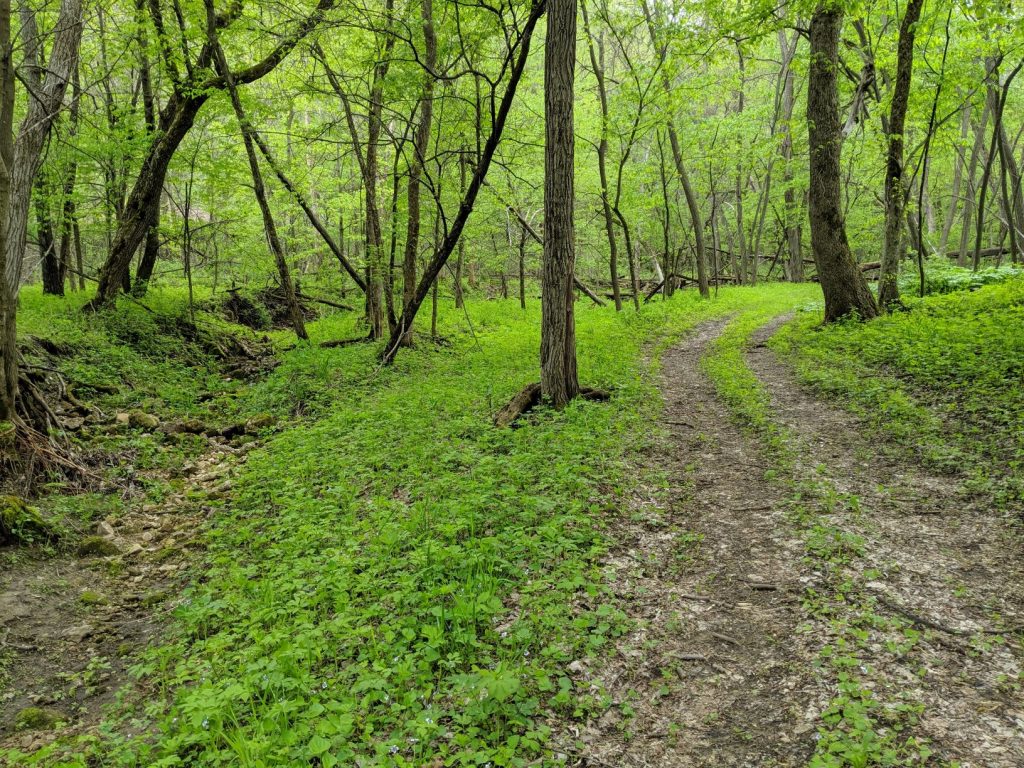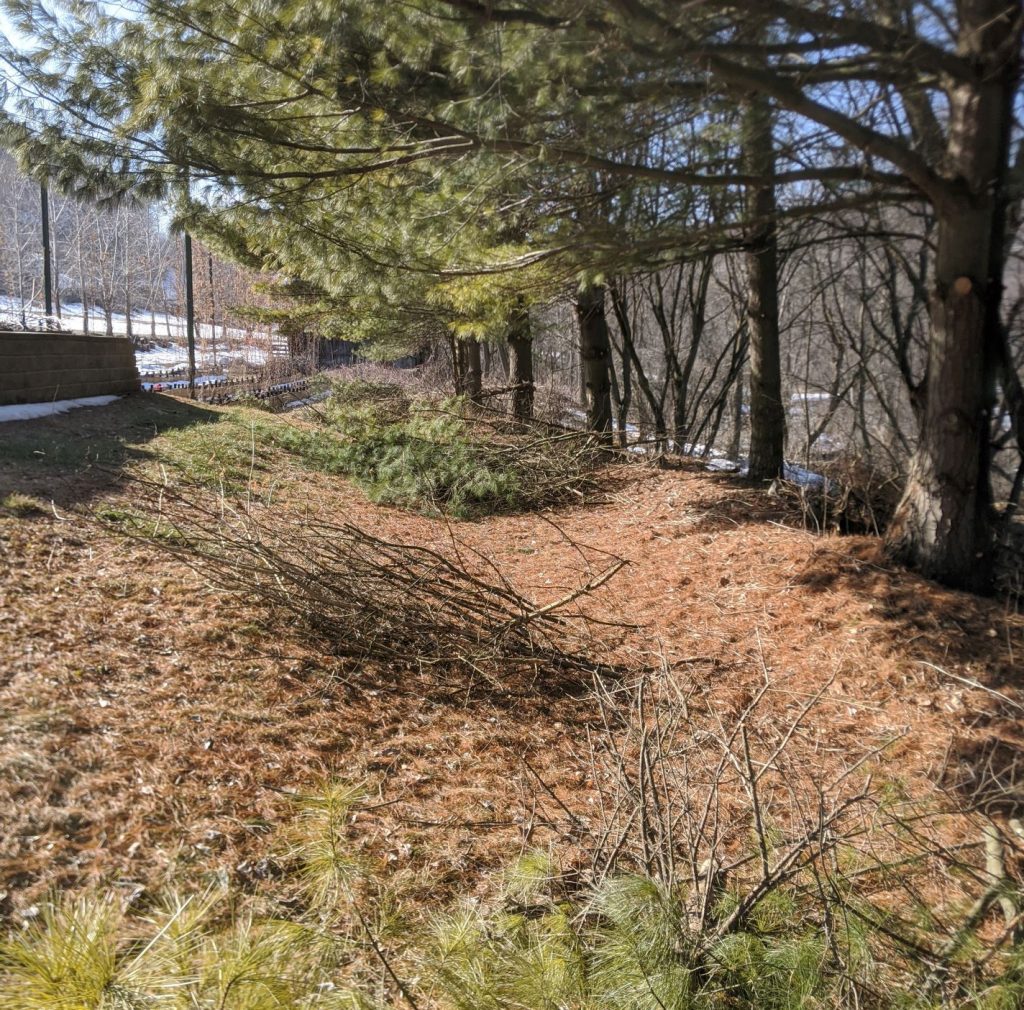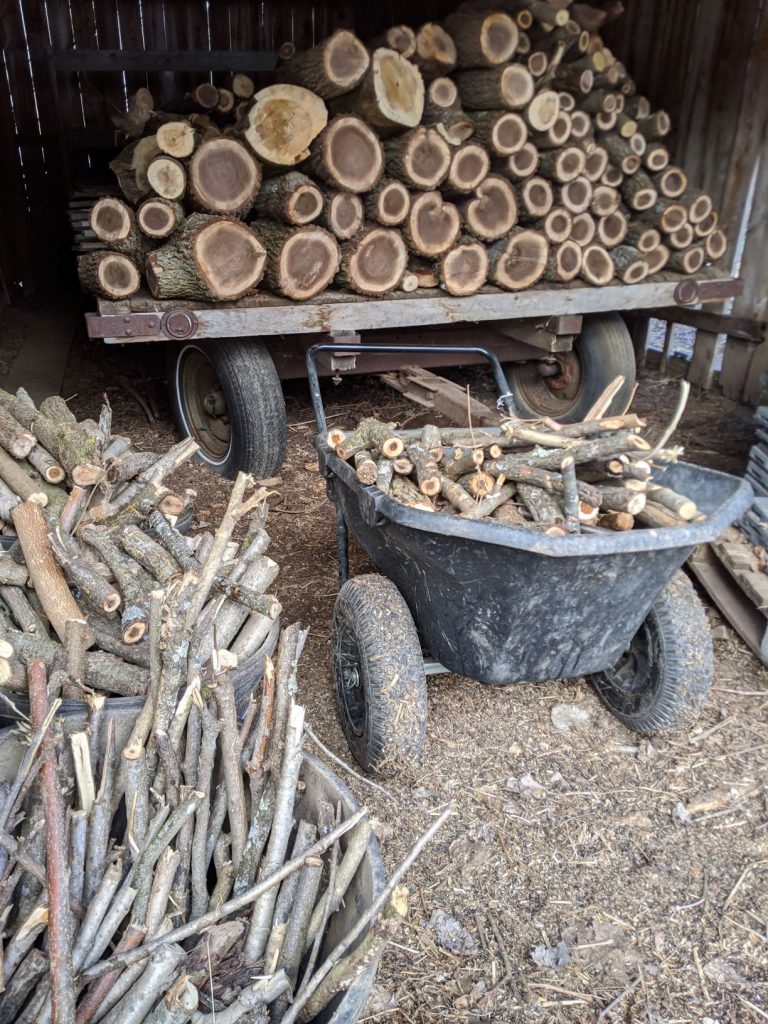Growing up, I always had the notion that one simply planted trees, waited, and with little to no work the world was vastly improved.
Trees are good, but not so simply, alas.
Firstly, trees grow like weeds.
Black walnuts are a particular problem here at the farm, in that they grow quite robustly everywhere, and they release juglone from their roots, a natural herbicide. Boxelder, elms, and other trees also sprout up willy-nilly. Forests naturally expand, especially in the absence of brush fires. There was a 4-inch diameter walnut growing on the berm which I had never noticed, yet somehow had managed to grow quite bit. Sneaky bugger, and he was far from alone.
So why are all these weedy trees bad? Shouldn’t they be good for climate change? Well, yes and no. Trees cause thick undergrowth to die out. This reduces diversity and increases erosion risk. Both of which are bad.

The ideal middle ground between prairie and forest is a savanna – where a few mature trees are spread across an otherwise open grassy plain. One tree, far from other trees, does not much harm undergrowth. The sun’s movement during the day means the undergrowth gets good sun exposure for at least part of the day.
The most iconic version of a savanna are portions of the African Serengeti. There, the numerous animals do all the hard work of minimizing new tree growth (in contrast, livestock often destroy a savanna by over-grazing the grasses, leading to ‘woody weedy enroachment’). At the farm, where the native grazing bison and elk are nowhere to be seen and where we lack (for now) proper established grassland, we must use heavy physical labor, especially chainsaws, to keep things clear.
Our farm area was once part of the Upper Midwest savanna. It is my goal to return it to that state. Unfortunately, very few people in the community know of or understand the value of the original native landscape.

Perhaps the most important lesson for those with trees to manage is that existing trees can be pruned of their lower branches, and sometimes other extraneous branches, to bring in increased light without fully removing the tree.
The task can yield additional benefits, namely firewood. I am finally trying to organize a more consistent collection and storage of firewood. The benefits of having a highly insulated house with an efficient fireplace are that we have some option for a fairly sustainable backup heat source. I’d prefer to install geothermal, but I guess that’s an issue for another time.

